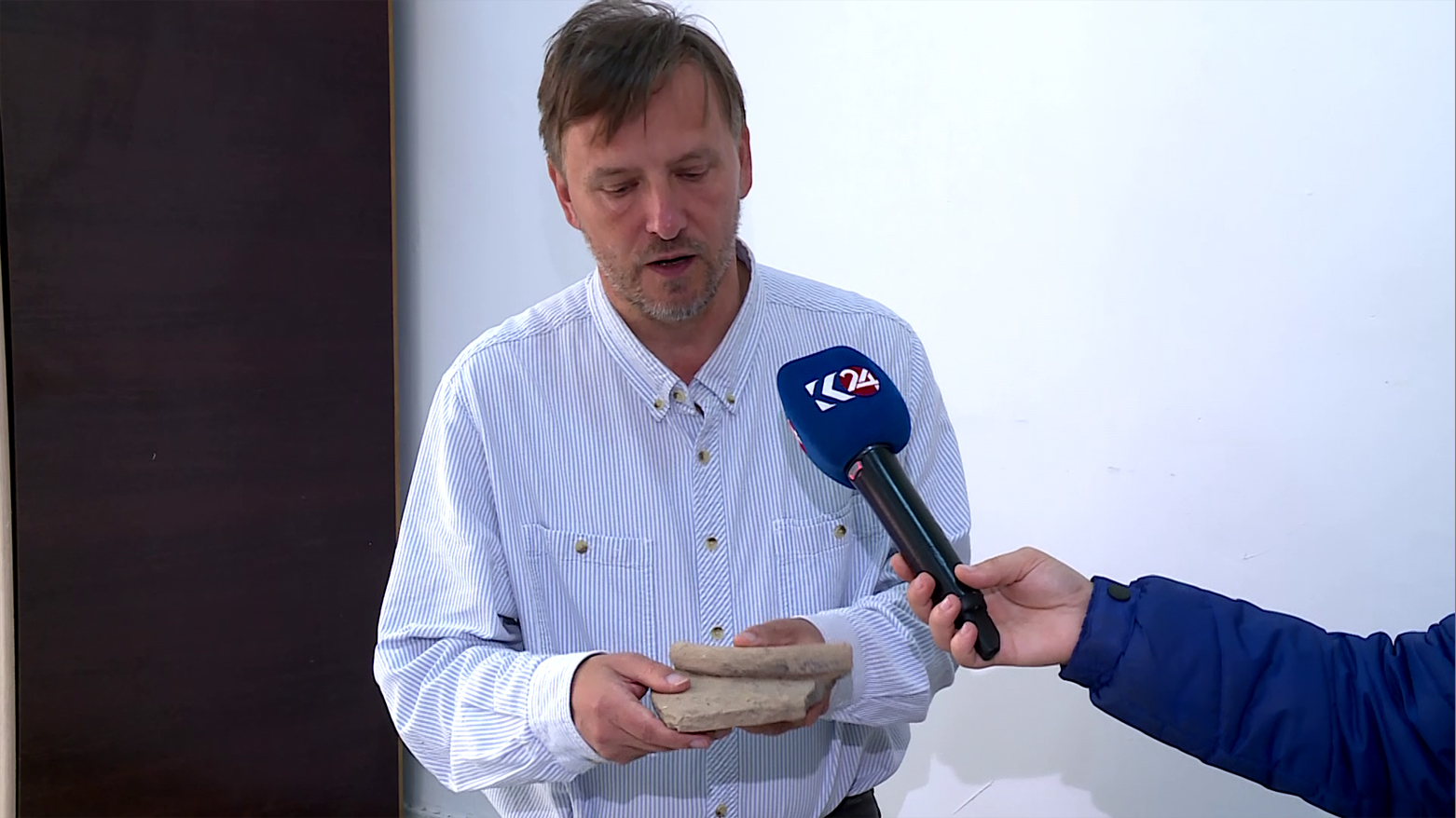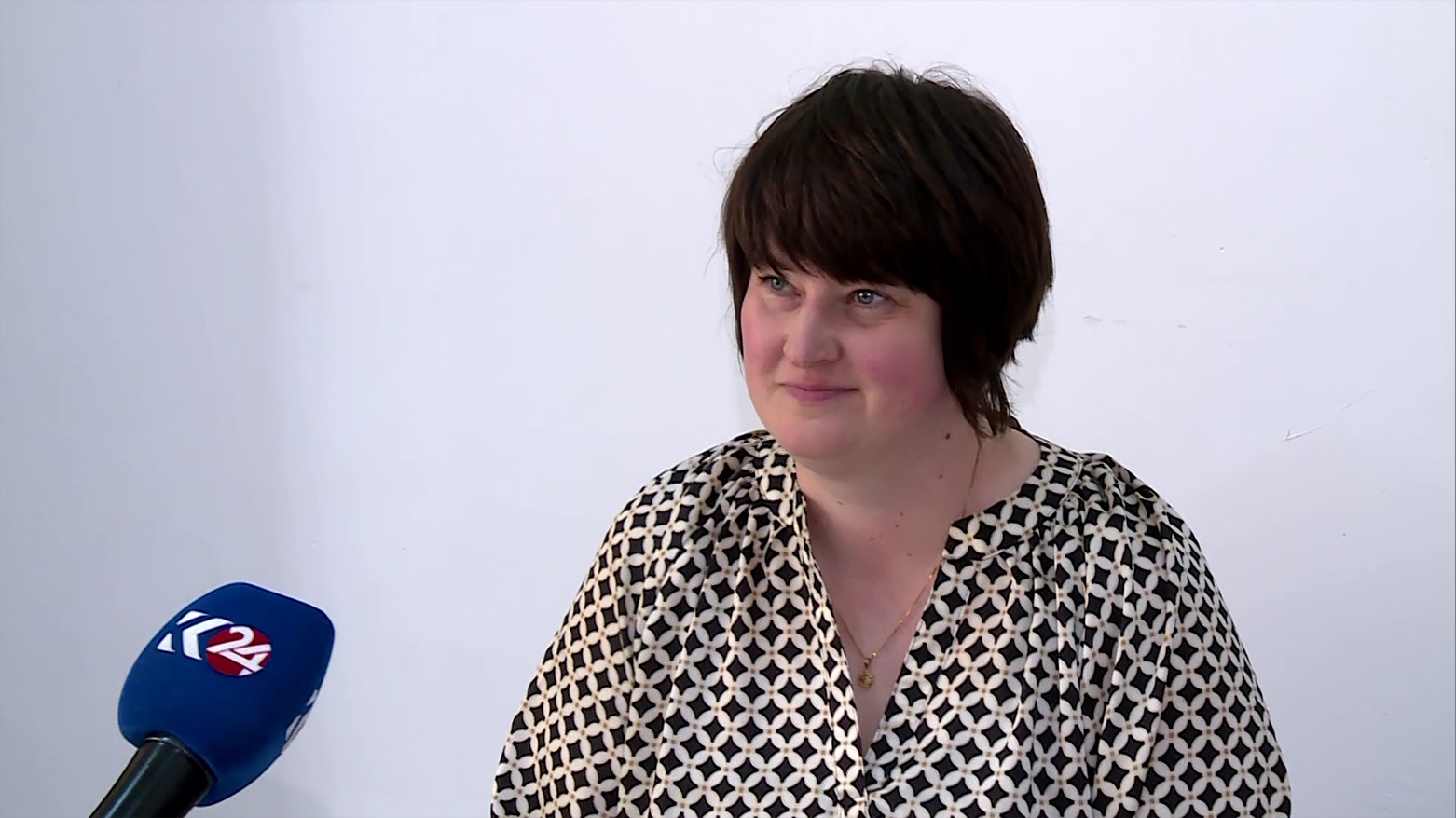Archaeologists Uncover Half-Million-Year-Old Relic in Erbil
Professor Karel Novacek from Palacký University Olomouc added, “We strongly recommend that Kurdish authorities take steps to protect this invaluable cultural heritage.”

ERBIL (Kurdistan24) – A team of Czech archaeologists has uncovered a wealth of previously undocumented archaeological sites in the Koya District of the Kurdistan Region of Iraq. Led by Professor Karel Novacek from Palacký University Olomouc, the project has been underway for three years, conducted in cooperation with the General Directorate of Antiquities in Kurdistan. The discoveries shed new light on the region’s historical significance, ranging from prehistoric settlements to historical villages and cemeteries.
“This is a project of landscape archaeology, focused on the area between Sktan and Gomaspan in Koya District, where there had previously been very little archaeological activity,” said Novacek. “We are among the first archaeologists to explore these sites, carrying out extensive mapping and inventory registration of archaeological remains.”
After three years of meticulous fieldwork, the team has registered approximately 200 archaeological sites, including historical caves with remnants of ancient human activity, burial sites, and settlements. “We are very happy and very surprised at how rich and diverse this archaeological heritage is,” Novacek added. “We strongly recommend that Kurdish authorities take steps to protect this invaluable cultural heritage.”
Significant Discoveries and Preservation Challenges
The research team has made remarkable findings in the 2024 excavation season alone, identifying 75 collections of archaeological material. Among these is one of the oldest artifacts found in the area—a man-made stone tool dating back approximately half a million years to the Old Stone Age. The discovery offers invaluable insight into early human presence in Kurdistan.
Another significant find includes a pottery fragment from the Late Chalcolithic period, estimated to be over 5,000 years old. “This was found just a few days ago,” Novacek noted. “Artifacts like these could significantly enrich the collections of Koya’s museum, which is currently quite small.”
However, many artifacts have been found in a broken state, largely due to damage caused by excavation machinery. This destruction poses a serious threat to the preservation of Kurdistan’s historical sites, highlighting the urgent need for stricter heritage protection measures.
Cutting-Edge Research and Documentation
The archaeological team employs advanced methods to document and analyze findings. Lenka Starkova, an archaeologist from the University of West Bohemia in Pilsen and Palacký University Olomouc, has been instrumental in using Geographic Information Systems (GIS) and 3D documentation techniques to map the landscape and archaeological sites.

“This season, we have made many new findings and identified numerous previously unknown sites,” Starkova explained. “We are particularly focused on studying caves in the region, which play a crucial role in understanding both prehistoric and historical human settlements.”
Starkova, who has worked in Kurdistan since 2013, specializes in landscape archaeology and has collaborated with Novacek on various projects. “In this research, we aim to combine our studies of modern and historical villages with prehistoric sites, creating a more comprehensive understanding of human habitation in the region,” she said.
Future of Archaeological Research in Kurdistan
The team’s ongoing work highlights the potential for further discoveries in the Kurdistan Region. The archaeologists continue to collaborate closely with the Directorate of Antiquities in Koya to register and protect newly discovered sites. As excavation and documentation efforts continue, the hope is that Kurdish authorities will implement stronger measures to safeguard these historical treasures from destruction and unauthorized excavation.
With each new finding, Kurdistan’s rich history is further unveiled, underscoring the region’s significance as a cradle of ancient civilization. The discoveries in Koya District not only provide crucial insights into the past but also emphasize the importance of heritage preservation for future generations.
During this season alone, the team has collected around 75 artifacts, including a stone artifact from the Stone Age. The recent discoveries consist of stone tools, pottery fragments, and metal objects, all carefully cleaned, cataloged, photographed, and documented to determine their historical period. The artifacts have been stored at the Koya Antiquities Directorate for preservation.
Hemen Hussein, a representative of the Koya Antiquities Directorate, emphasized that the artifacts will not be sent abroad, as both Iraqi and Kurdistan antiquities laws prohibit their removal from the region.
"The excavation team is working within the villages of Sktan subdistrict and its surrounding valleys, such as Sktan Valley, Nazanin, Samaquli Valley, Aliyah Valley, and Gamaspan Gorge," he stated.
Most caves in Kurdistan have revealed archaeological remains dating back to approximately 5000 BCE, highlighting the region’s rich historical heritage. Experts stress the importance of preserving these sites, as they form an integral part of Kurdistan’s cultural and historical identity.
